
How to Use HC-SR505 Mini PIR Motion Sensing Module: Examples, Pinouts, and Specs
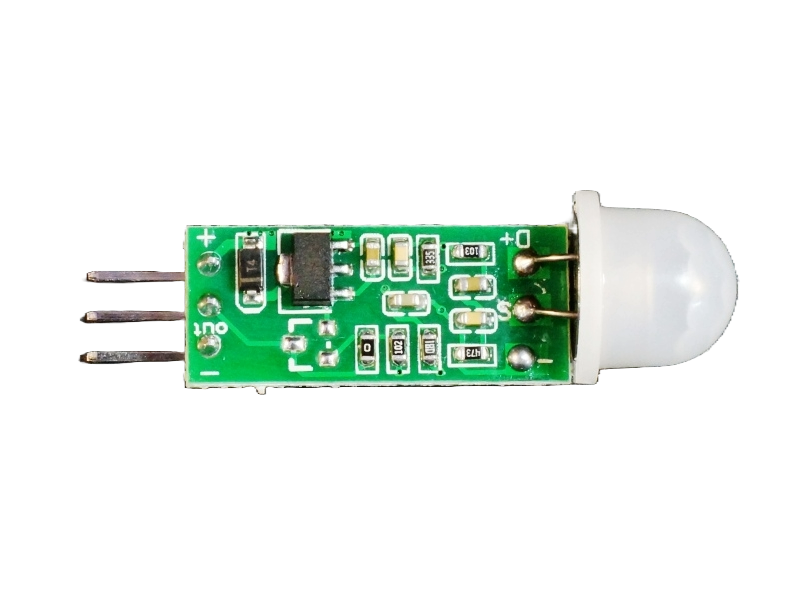
 Design with HC-SR505 Mini PIR Motion Sensing Module in Cirkit Designer
Design with HC-SR505 Mini PIR Motion Sensing Module in Cirkit DesignerIntroduction
The HC-SR505 Mini PIR (Passive Infrared) Motion Sensing Module is a compact, low-power sensor capable of detecting the presence of humans or animals by sensing the infrared radiation they emit. This module is widely used in various applications such as security systems, automatic lighting, and home automation projects due to its small form factor and ease of use.
Explore Projects Built with HC-SR505 Mini PIR Motion Sensing Module
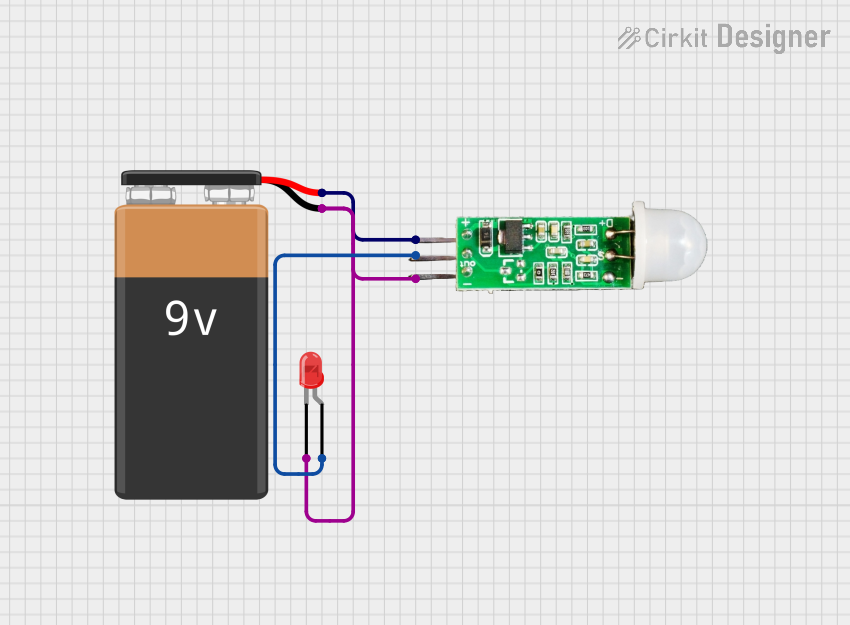
 Open Project in Cirkit Designer
Open Project in Cirkit Designer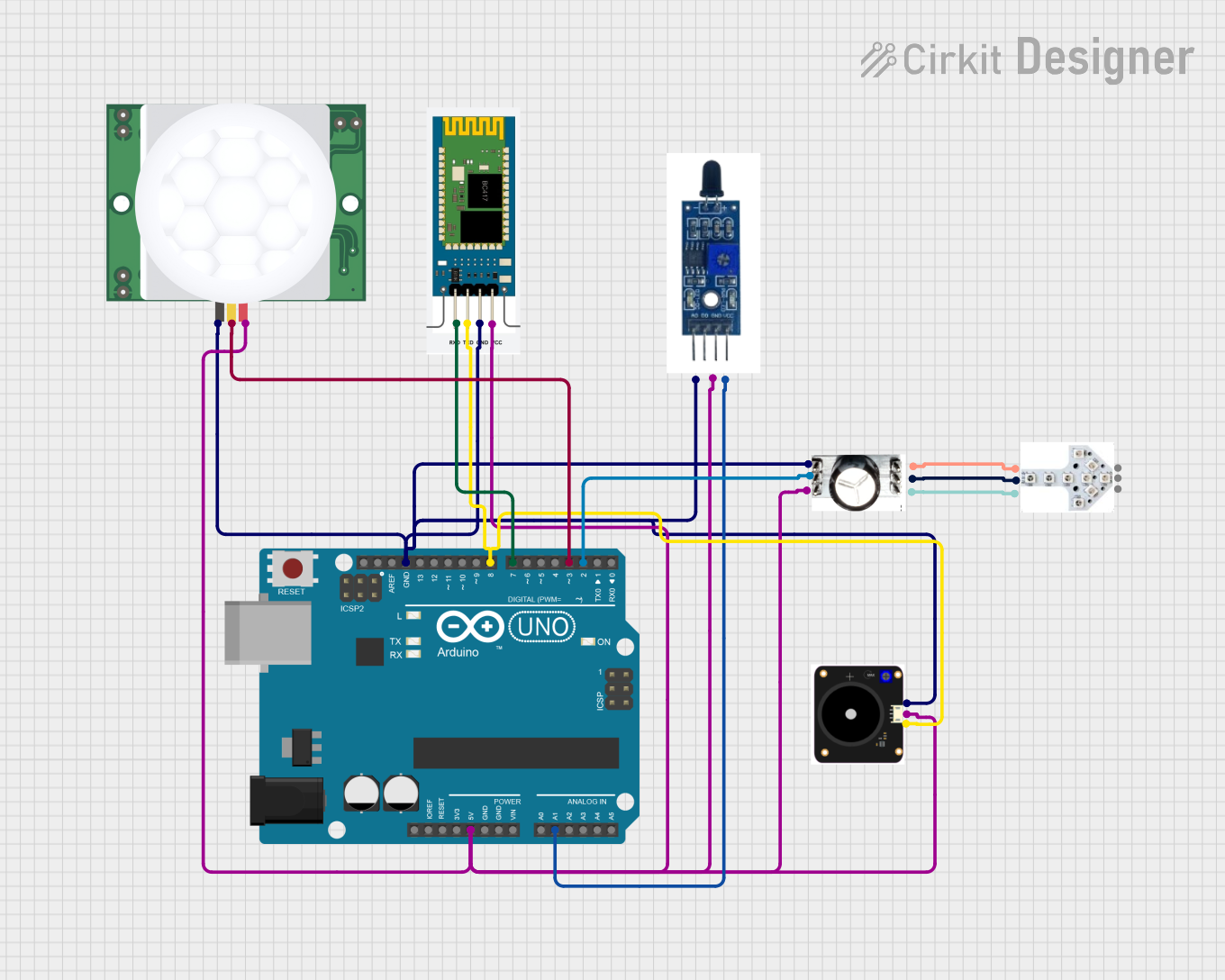
 Open Project in Cirkit Designer
Open Project in Cirkit Designer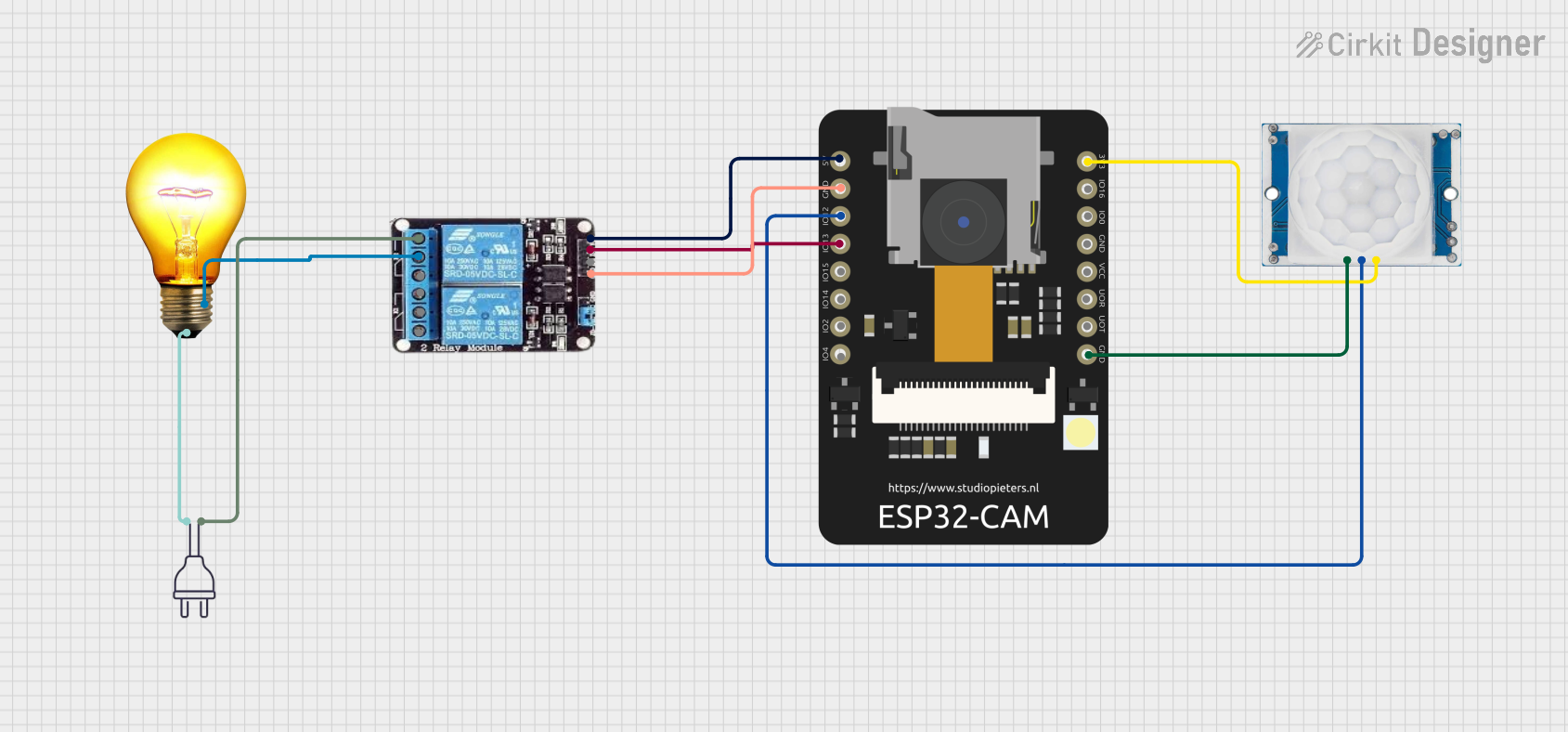
 Open Project in Cirkit Designer
Open Project in Cirkit Designer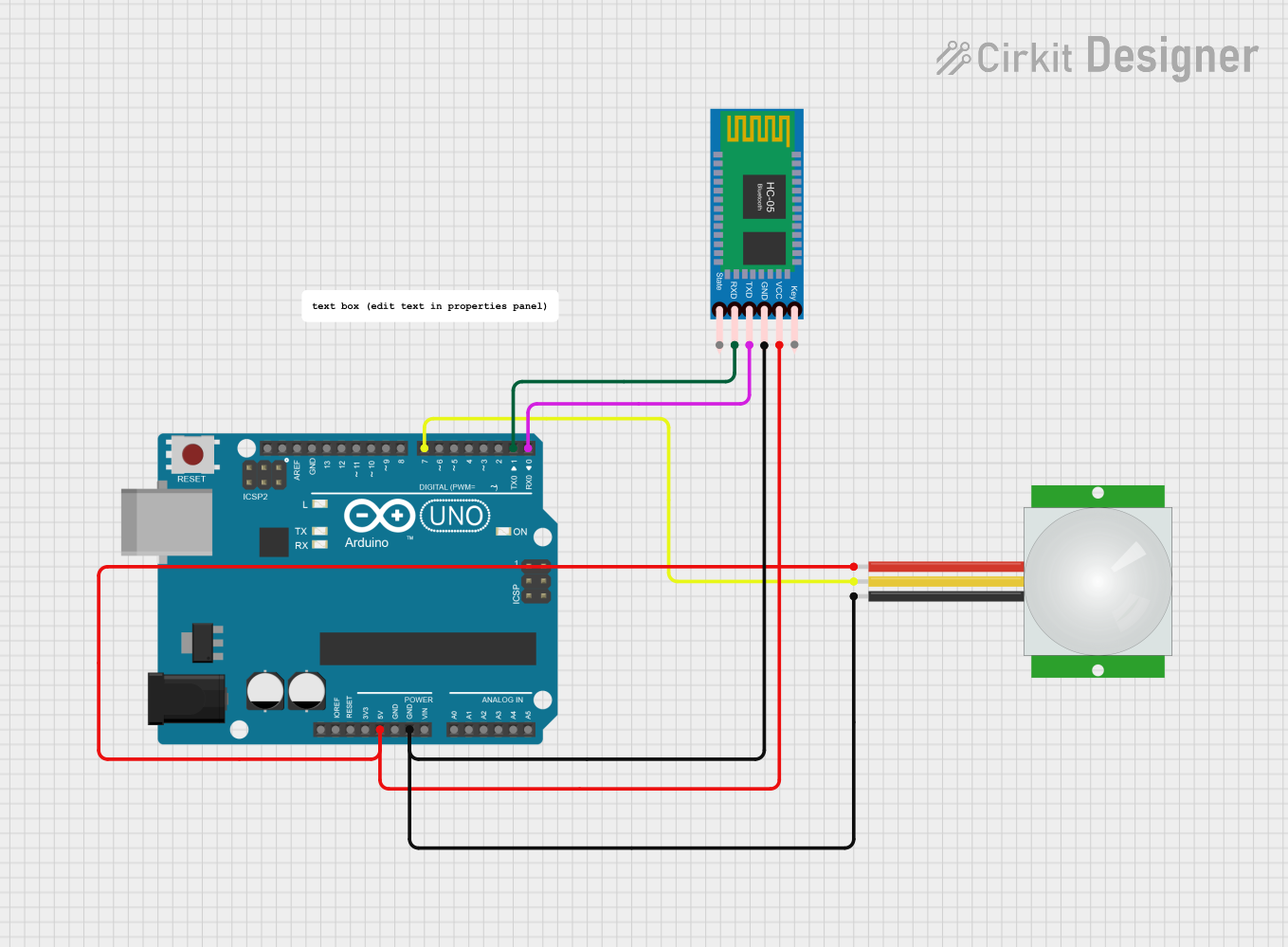
 Open Project in Cirkit Designer
Open Project in Cirkit DesignerExplore Projects Built with HC-SR505 Mini PIR Motion Sensing Module

 Open Project in Cirkit Designer
Open Project in Cirkit Designer
 Open Project in Cirkit Designer
Open Project in Cirkit Designer
 Open Project in Cirkit Designer
Open Project in Cirkit Designer
 Open Project in Cirkit Designer
Open Project in Cirkit DesignerCommon Applications and Use Cases
- Motion-activated night lights
- Security alarms
- Automatic door openers
- Presence detection for energy-saving systems
Technical Specifications
Key Technical Details
- Operating Voltage: 4.5V to 20V
- Quiescent Current: <60uA
- Level Output Voltage: High 3.3V / Low 0V
- Delay Time: Adjustable (default 8s + -30%)
- Blockade Time: 2.5s (default)
- Trigger Method: Repeatable trigger
- Detection Angle: <100 degrees
- Detection Distance: Up to 3 meters
- Operating Temperature: -20 to +80 degrees Celsius
Pin Configuration and Descriptions
| Pin Number | Name | Description |
|---|---|---|
| 1 | VCC | Power supply input (4.5V to 20V) |
| 2 | OUT | Output signal (High/Low) |
| 3 | GND | Ground connection |
Usage Instructions
How to Use the Component in a Circuit
- Connect the VCC pin to a power supply within the range of 4.5V to 20V.
- Connect the GND pin to the ground of the power supply.
- Connect the OUT pin to a digital input pin on a microcontroller, such as an Arduino UNO.
Important Considerations and Best Practices
- Ensure that the power supply voltage does not exceed the maximum rating of 20V.
- Avoid placing the sensor in an environment with rapid temperature changes to prevent false triggers.
- The sensor should not be exposed to direct sunlight or placed near heating devices.
- Install the sensor away from wind sources such as air conditioners or fans.
Example Code for Arduino UNO
// Define the PIR motion sensor pin
const int PIRPin = 2; // Connect HC-SR505 OUT pin to Arduino pin 2
void setup() {
pinMode(PIRPin, INPUT); // Set the PIR pin as an INPUT
Serial.begin(9600); // Initialize serial communication
}
void loop() {
int motionState = digitalRead(PIRPin); // Read the PIR sensor output
if (motionState == HIGH) {
// If motion is detected, output a message
Serial.println("Motion detected!");
// Add your code here to handle the motion event
} else {
// If no motion is detected, output a different message
Serial.println("No motion.");
}
delay(1000); // Wait for 1 second before reading again
}
Troubleshooting and FAQs
Common Issues Users Might Face
- False triggers: Adjust the sensor's placement or orientation to minimize false triggers caused by environmental factors.
- No response: Check the power supply and connections to ensure the module is properly powered and connected.
- Intermittent operation: Ensure that the sensor is not exposed to direct sunlight or strong RF fields which may cause interference.
Solutions and Tips for Troubleshooting
- If the sensor is not triggering, verify that the connections are correct and the power supply is within the specified range.
- In case of erratic behavior, reset the power to the module to clear any latched states.
- For issues with sensitivity or detection range, consider adjusting the sensor's position or the delay time if applicable.
FAQs
Q: Can the HC-SR505 be used outdoors? A: The HC-SR505 is not waterproof and is best used indoors or in a protected outdoor environment.
Q: How can I adjust the delay time? A: The default delay time is approximately 8 seconds. To adjust it, you would need to replace the onboard timing resistor with one of a different value, which requires soldering and an understanding of the module's circuitry.
Q: Is it possible to power the HC-SR505 with a battery? A: Yes, as long as the battery voltage is within the 4.5V to 20V range, the HC-SR505 can be battery-powered.
Q: How can I reduce power consumption for battery-operated projects? A: You can reduce power consumption by using a lower supply voltage within the acceptable range and by minimizing the active time of any connected devices triggered by the sensor.